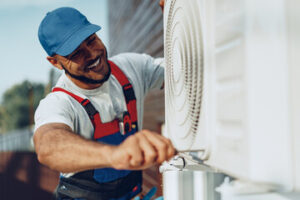Level Ground Excavation is a process of digging and smoothing the surface of your land. It’s often done to create foundations or structures but can also be used for other things. When excavating, it’s important to loosen the soil and remove any larger rocks or roots that could obstruct the leveling of your land. This will make the process much easier.

Level Ground Excavation is a lot of work and takes time and skill. The key to success is to use the right tools for the job. There are a number of different digging tools to choose from, including the classic spade and garden fork. You can also enlist the help of your local contractor or go it alone with a hammer and bucket. A well-stocked tool kit should include a top-rated shovel, the best garden fork and hoe in the house, a bow rake, and perhaps the most important item of all – a good sense of humor.
Loosening the soil is an obvious first step in this process. For instance, if you plan to dig out a few smaller holes or depressions for your next project, consider using a wheelbarrow or your favorite gardening cart as a dumping device. As you move from site to site, try and get a feel for the amount of soil required to fill each hole and depression, and disperse that soil as evenly as possible. This will save you time and effort in the long run.
Remove the Larger Stones and Roots. This will ensure the ground is leveled properly and avoid potential problems. If you plan to level your yard, it is important to excavate carefully. One of the first things you must do is remove the larger stones and roots obstructing the level ground excavation process. While this may seem tedious, it is necessary to do so before moving on to the next step.
Fortunately, removing the stones and roots is easier than you might think. In fact, it is usually easy to do with a few basic tools. Soil is like plants; it requires attention and a little help occasionally. Adding various types of organic matter will improve its nutrient value, water retention and structure.
A healthy soil food web provides an environment where fungi and bacteria can multiply, providing nutrients that may otherwise be locked up in the soil. This nutrient cycling is the key to healthy plants.
Soils differ greatly in the availability of nutrients that are required for plant growth. This is especially true in old, heavily weathered soils or new, volcanically derived soils.
Getting the most out of your excavation budget involves a lot of legwork and a little luck. Luckily, there are a few steps you can take to ensure your next home improvement project is the best it can be. In particular, you want to focus on the three major areas of your property – the front yard, back yard and backyard. The key to a smooth, leveled, pest-free space is to plan and execute regardless of which side you start on. It’s also a good idea to consult a professional for the best advice on what to do and what not to do.
Many companies offer concrete construction services. But how can you find the best company? Read this article to find out! Concrete contractors are specialized in construction services. Some specialize in roads, buildings, and foundations. Others focus on commercial projects, such as retail or office buildings. If you want to become a concrete contractor, you should know about the business before you start. And before you make your first step, ensure you’ve mastered all the necessary skills.
Besides having a good idea of what you need, you should also do your own research. Using the Internet will give you a list of possible concrete contractors, and you can also ask around friends and local concrete supply companies. With a list of contractors, you’ll better understand how to compare and choose the best company for your needs. Then, once you’ve found a company that meets your expectations, you can work on hiring them.
While some contractors may be able to do most of the work themselves, a professional contractor can ensure that the job is done correctly and according to specifications. They are trained to handle the different concrete stages, from unmixed to the finished product. They can design complex plans and create custom products with their knowledge and expertise. A good concrete contractor will ensure you’re satisfied with the project and will go the extra mile to meet your expectations.






